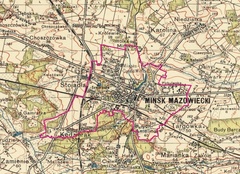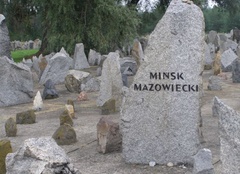Minsk
Pronounced “Meensk (Mah-zoh-vee-EHTS-kee)” (Russian: Миньск-Мазовецки / Min’sk-Mazovetski, Lithuanian: Mazovijos Minskas, Yiddish: מינסק / Mintsk, Hebrew: מינסק)
The first Jewish settlers arrived in the Polish village of Mińsk Mazowiecki in the 1600s. Many worked as brewers and distillers, but the growth of the Jewish community was limited until 1768 when longstanding restrictions against permanent Jewish settlement were finally lifted.
In the 1790s, Mińsk Mazowiecki came under the control of the Prussian (German) Empire before the region was joined to the Russian Empire in 1815. A number of the town’s Jewish residents found work in construction, building barracks for the Russian army or paving the highway that connected the Polish capital of Warsaw to Moscow. By the 1860s the approximately 620 Jews of the community had built a synagogue, cemetery and mikvah (ritual bath). Many followed the Hasidic movement that emphasized spiritual connection over scriptural analysis.
The Jewish community of Mińsk Mazowiecki grew to more than 3,600 by 1897, making up more than a third of the total population. A second cemetery was established in 1870 followed by a yeshiva (Jewish school) in 1896.
German forces occupied Mińsk Mazowiecki during World War I (1914-1918). Jewish property was seized and Jews were forced to pay heavy taxes, forcing the community into poverty. After the war, Poland regained independence as a sovereign state. However, fighting continued as Polish forces struggled to gain territory from Russia during the Polish-Soviet War (1919-1921). Jewish residents faced harassment and looting when the troops of Polish General Józef Haller moved through the town.
Jewish life in Mińsk Mazowiecki resumed some stability in the 1920s and 1930s. From 1919 to 1934 Jews held 7 to 9 of the 24 total seats on the city council. Sadly, this same period witnessed also the resurgence of anti-Jewish sentiment across Europe. Many Jews joined the growing Zionist movement that advocated for the creation of an independent Jewish state. In 1921, a Tarbut (Hebrew-language school) opened in the town and several Jews moved to Palestine.
Survivor Hania (Anna) Lewkowitz was born in Mińsk Mazowiecki in 1935, only two years after Hitler came to power in neighboring Germany. In the 1930s, a group of Polish workers declared an economic war on the Jews of the town. Jews were violently attacked and their businesses looted during a series of antisemitic riots in 1936. Unable to reopen their ruined stores, many Jewish shop owners were left penniless and destitute. By 1939, the number of Jews on the city council had been cut in half to four.
Nazi forces reached Mińsk Mazowiecki on September 13, 1939. The next year all Jews were forced into a crowded ghetto where they suffered disease and starvation. On the “Bloody Friday” of August 21, 1942, a thousand Jews were shot and about 3,500 were deported to the killing center of Treblinka, including the father and grandfather of survivor Hania Lewkowitz. Only a few hundred Jews were kept alive to work as slave laborers. Despite brave efforts to resist the Nazis, the remaining Jews of the town were killed in June 1943. The 300-year-old Jewish community of Mińsk Mazowiecki was completely annihilated.
Minsk: Photographs & Artifacts
-
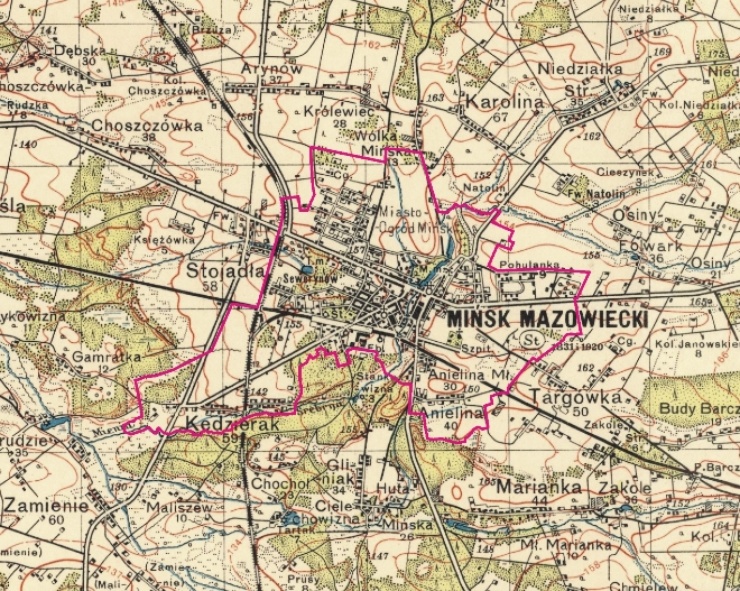 Map of Mińsk Mazowiecki, ca. 1937. Wikimedia Commons / Wojskowy Instytut Geograficzny / Public Domain
Map of Mińsk Mazowiecki, ca. 1937. Wikimedia Commons / Wojskowy Instytut Geograficzny / Public Domain -
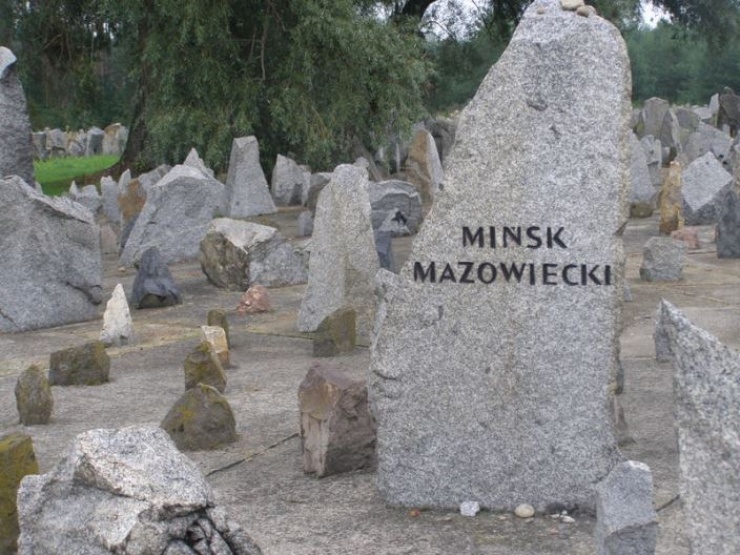 The memorial to the Jews of Mińsk Mazowiecki murdered at the killing center of Treblinka. This photo was taken in 2007. Wikimedia Commons / Profsowa / CC-BY-SA 3.0
The memorial to the Jews of Mińsk Mazowiecki murdered at the killing center of Treblinka. This photo was taken in 2007. Wikimedia Commons / Profsowa / CC-BY-SA 3.0
Destroyed Communities Memorial Slope
Minsk: Survivors
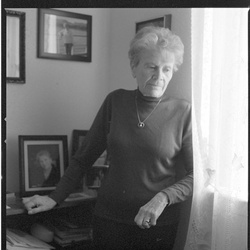
Ten prisoners were put against the wall at a time. An officer yelled: ‘Fire!’
